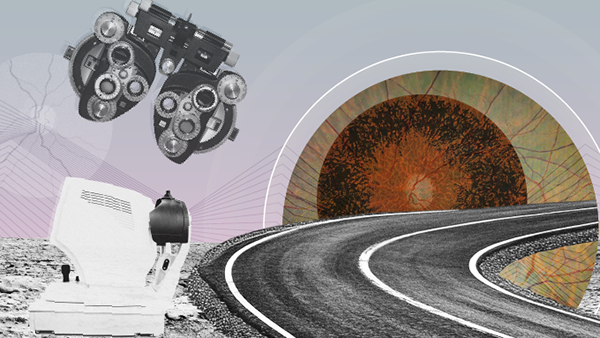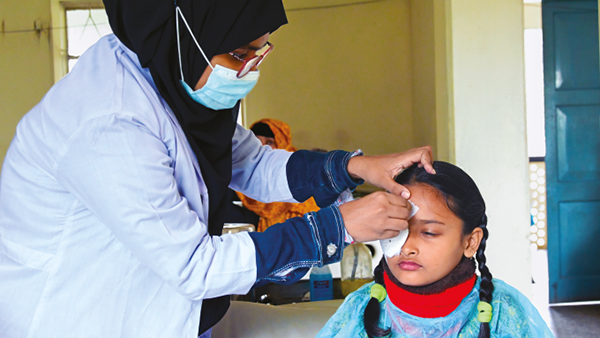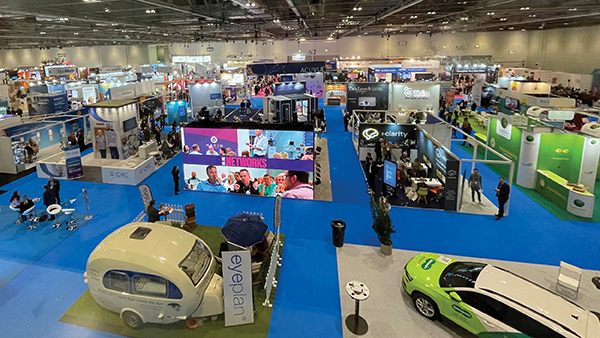Screening for Vision and Hearing in Schools
Improving literacy outcomes for children with vision impairments and hearing loss
Hearing and vision play critical roles in a child’s ability to learn and interact with the world, especially within the context of educational progress, social development, and overall well-being. Core tasks like reading text on the board, in books, or on screens are made substantially more difficult, and a child may develop a lack of interest in reading activities which may also hinder their ability to accurately copy text.
Furthermore, hearing problems are known to delay the progress of language skills as it can lead to issues with vocabulary, grammar, and pronunciation, in addition to basic communication. It can even impede participation in classroom activities and conversations.
Those with undetected hearing or vision issues are often treated as “problematic” as their frustration may result in disruptive classroom behavior. In this regard, early detection and intervention is vitally important.
Consequences of hearing and sight problems
A recent UK study of 2,909 children found that those with co-occurring hearing and visual impairments were less likely to meet the national target at Key Stage 2 compared to their peers with normal hearing and vision. The researchers noted that this could not be explained by differences in IQ, behavior, attention, or social cognition. Moreover, poor performance at Key Stage 2 had a cascading effect on GCSE results, potentially limiting access to higher education. Another study found that higher hearing thresholds were associated with higher behavioral problem scores and poorer school performance among school-aged children. These findings highlight the importance of identifying and addressing even mild to moderate hearing loss in children.
Recent studies suggest that a significant proportion of academic underperformance can be attributed to undetected vision and/or hearing impairments. The Cooper Institute reports that around 60 percent of students who struggle with learning may have underlying vision issues. Furthermore, several studies indicate that up to 40 percent of students diagnosed with a learning disability may, in fact, have an undiagnosed or untreated visual or hearing impairment. The impacts of hearing and vision impairments can also extend beyond the classroom and into adulthood. For example, literacy problems in the prison population are often compounded by a range of emotional, learning, and attentional deficits, including uncorrected visual and hearing impairments in childhood.
A growing issue
Unfortunately, there is a growing body of literature that argues the number of children with a vision or hearing impairment is likely to grow due to lifestyle changes. More screen time equals a worldwide epidemic of myopia (shortsightedness). The growing use of in-ear headphones is also contributing to hearing impairments, particularly in children who are gaming and listening to loud music. The WHO estimates that cases of myopia in young people are expected to grow to 3.36 billion by 2030 due to lifestyle-related risk factors.
Following the pandemic, 68 percent of study participants decreased the time they spent outdoors (a substantial cause of the increase in myopia) while time spent using screens increased 2.8-fold. This is backed up by research from Hong Kong, which found that 30 percent of the children tested after the COVID-19 pandemic suffered from myopia, compared to just 12 percent of the children tested before the pandemic – a staggering 2.5-fold increase in just a few short years.
Identifying impairments is crucial
One of the biggest challenges associated with undetected vision or hearing impairments is that teachers often do not know which children are affected. This means that they are effectively “flying blind” and may not be able to provide the necessary support or accommodations to help these children succeed. To address this, many organizations have developed programs and initiatives aimed at screening children for hearing and vision problems. By detecting these issues early on, teachers and parents can work together to provide the necessary accommodations and support to help these children succeed.
Routine checking once a year can help quickly identify impairments before there is any severe impact on learning or behavior. Where a possible impairment is detected, parents can then take their child for a more in-depth assessment by an audiologist or optician and, if required, a prescription for glasses or hearing aids. One such initiative is the Fischer Family Trust’s Apex project, which is focused on improving literacy outcomes for children with vision impairments (hearing impairments are also being considered). So far, a total of 910 pupils from six schools have been screened, using the SchoolScreener for Schools software from Thomson Screening, for visual impairments and 165 (18 percent) were referred for further eye tests by an optician. Of those, 61 percent required glasses or a change in prescription.
Given the significant impact that hearing and vision impairments can have on children’s educational outcomes and behavior, it is in the best interests of schools to prioritize screening for these issues. Not only does this help to meet school requirements around welfare, inclusion, and behavior, but it can also save time and money in the long run – including children that may otherwise be seen as requiring special educational needs support. Moreover, most adjustments or solutions for hearing and vision impairments are easy and cheap to implement. For some children, simply sitting towards the front of the class will help. When teachers know if a child has a color vision impairment, adjustments can be made.
In short…
Undetected hearing and vision issues can have profound and far-reaching effects on a child’s educational journey. By prioritizing early detection and intervention, and by making necessary adjustments in the classroom, we can ensure that all children have the opportunity to succeed academically and to develop socially and emotionally. Addressing these silent struggles is not just an educational imperative but a societal responsibility, ensuring that every child has the tools and support they need to thrive.
schoolscreener.com/
The New Optometrist Newsletter
Permission Statement
By opting-in, you agree to receive email communications from The New Optometrist. You will stay up-to-date with optometry content, news, events and sponsors information.
You can view our privacy policy here
Most Popular
Sign up to The New Optometrist Updates
Permission Statement
By opting-in, you agree to receive email communications from The New Optometrist. You will stay up-to-date with optometry content, news, events and sponsors information.
You can view our privacy policy here
Sign up to The New Optometrist Updates
Permission Statement
By opting-in, you agree to receive email communications from The New Optometrist. You will stay up-to-date with optometry content, news, events and sponsors information.
You can view our privacy policy here







